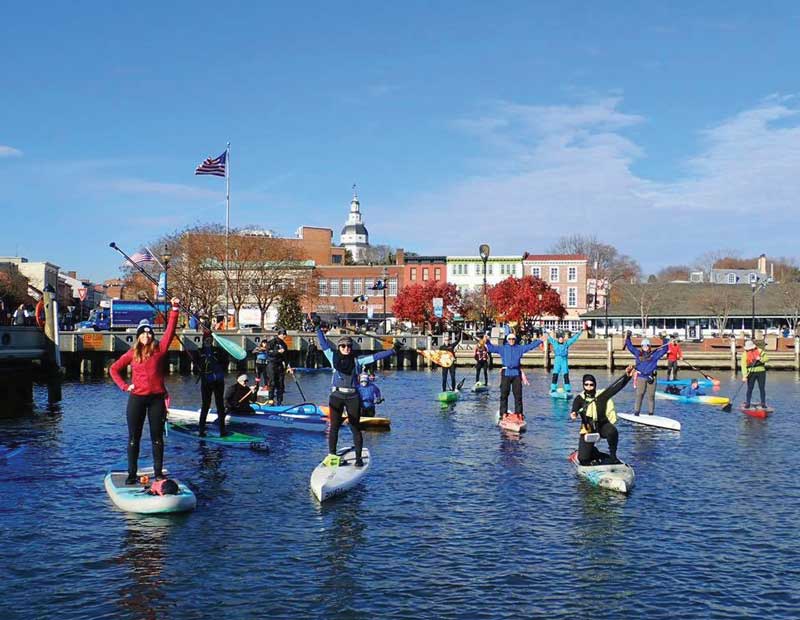“Dress for the water temperature, not the air temperature,” says Bill Smith of the Chesapeake Paddlers Association (CPA). As an active paddler, Smith knows well that a warm day in late fall or winter is a temptation for any boater or paddler to get out on the water.

“Cold water shock and hypothermia are real dangers,” he says. “Cold water shock happens almost instantly when someone is immersed in cold water, and it can be deadly because of the gasp reflex and the loss of strength, which can happen quickly. Hypothermia takes a little more time to set in, but it can quickly affect your mind and your ability to make good decisions.
“Always were a PFD and wear proper protective gear. I suggest a wetsuit for water temperatures between 50 and 60 degrees, and a dry suit for colder water. Take a buddy or two with you and let someone know where you’ll be and when you expect to return. Check the weather frequently because things can change fast on the Bay. I’ve set out on calm waters only to find myself in three to four-foot chop a short time later.”
Boaters and paddlers should remember the 1-10-1 principle: If you fall into cold water, you have one minute to get your breathing under control; you have 10 minutes of meaningful movement to get to your destination; and you have one hour before you become unconscious due to hypothermia.
If you accidentally go in the water and you’re wearing a lifejacket, draw your knees up together, keep your arms tightly against your sides or wrapped around your knees, and lean your head back to keep your face out of the water. This is known as the Heat-Escape-Lessening Position (HELP).
CPA traditionally holds a cold water safety workshop in January, which in past years has included a lecture and an opportunity for participants to try out their dry suits in cold water. Check the association’s website for details at cpakayaker.com.